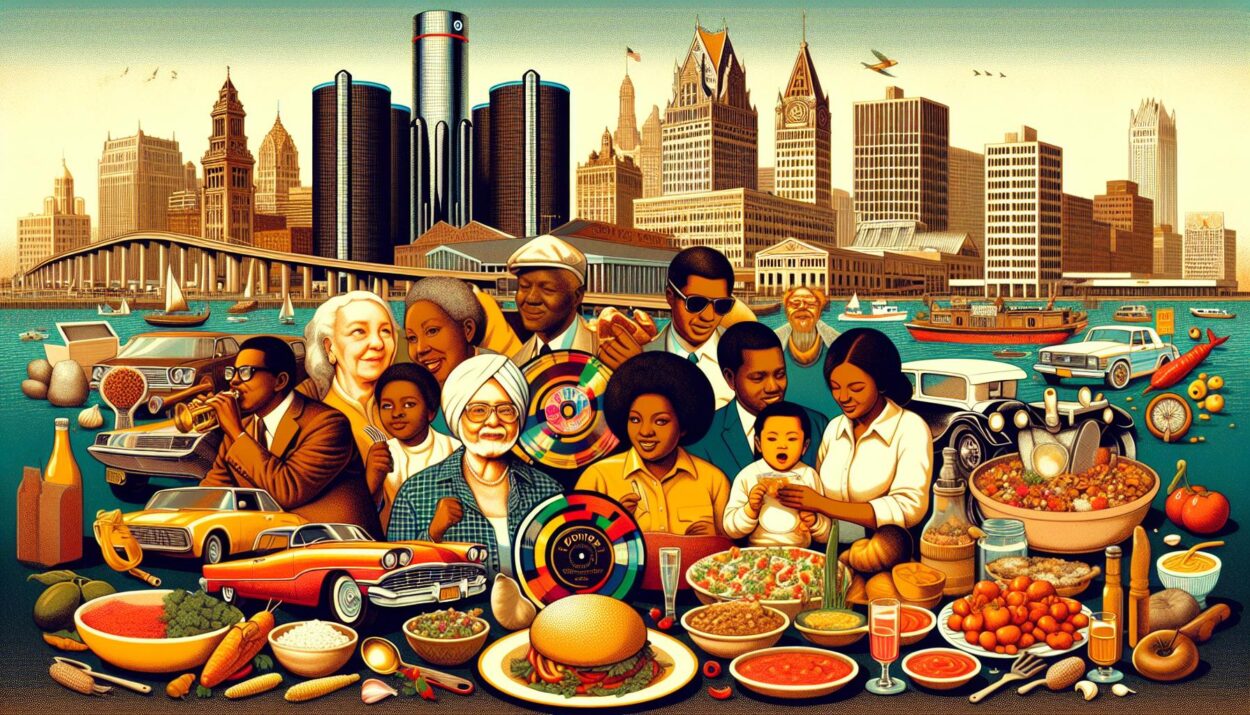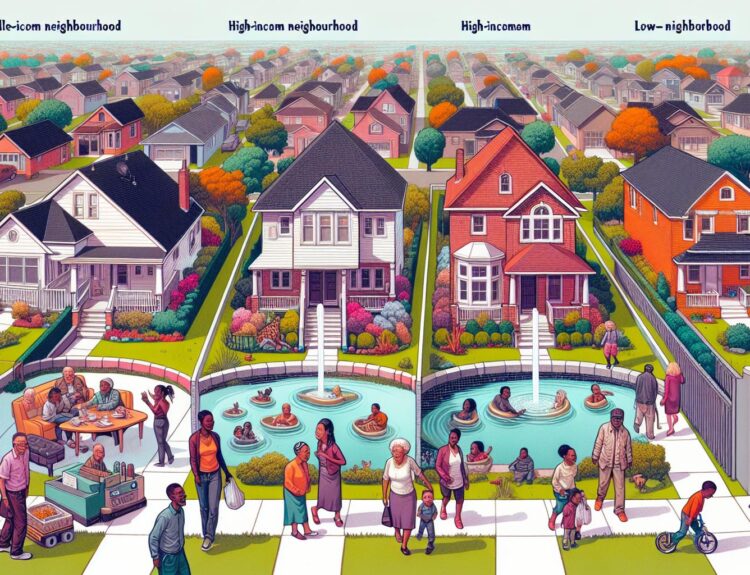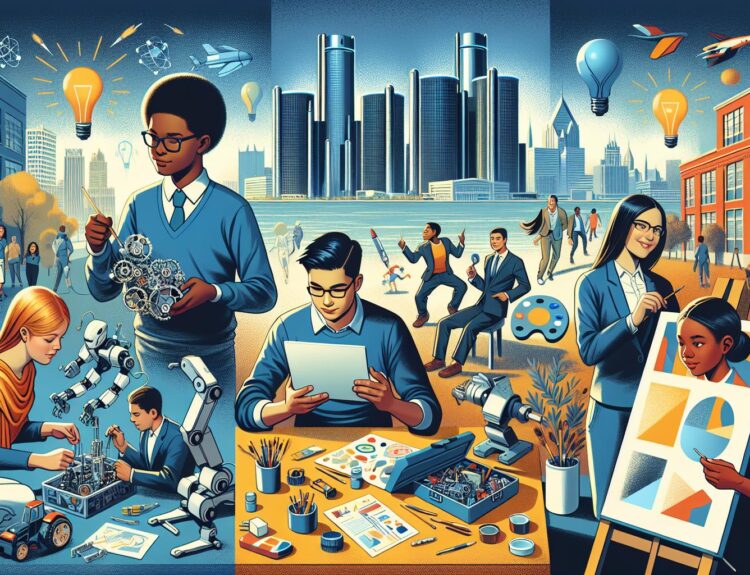Detroit, often dubbed the Motor City, has a story that’s deeply intertwined with the rise of the auto industry. It’s fascinating to see how this industry not only shaped the city’s economy but also its culture and identity. From the bustling assembly lines to the birth of the middle class, Detroit’s development has been on a unique trajectory, thanks to the automotive giants.
As I dive into the history, it’s clear that the impact of the auto industry on Detroit is profound. The city transformed from a modest manufacturing hub to the heart of America’s car production, attracting workers and innovators from all over. This shift didn’t just change the city’s skyline; it altered the very fabric of Detroit’s society, making it a beacon of industrial success in the 20th century.
Rise of the Auto Industry in Detroit
As I delve deeper into Detroit’s transformation, it’s clear that the rise of the auto industry played a pivotal role in shaping the city’s destiny. I’ve always been fascinated by how certain industries can become the lifeblood of a city, and in Detroit’s case, it’s undeniably the automobile sector.
In the early 20th century, visionaries like Henry Ford set the stage for Detroit’s future as the Motor City. Ford’s introduction of the assembly line in 1913 revolutionized car manufacturing, making it faster and more efficient. This innovation wasn’t just a leap forward in engineering; it was the spark that ignited Detroit’s explosive growth. Suddenly, cars were more accessible to the average American, and demand skyrocketed.
Ford’s Moving Assembly Line: A game-changer in manufacturing
- Reduced car assembly time from 12 hours to about 1.5 hours
- Significantly lowered the cost of the Model T, making it affordable for the mass market
As the auto industry grew, so did Detroit. The city became a magnet for workers from across the country. People were drawn not only by the prospect of stable employment but also by the promise of a future in a city that stood at the forefront of technological innovation. The population swell had a domino effect, leading to the development of housing, schools, and infrastructure to support the burgeoning workforce.
With the Big Three—Ford, General Motors, and Chrysler—anchoring Detroit’s economy, the city’s identity became inseparable from its automotive roots. These companies didn’t just manufacture cars; they symbolized American ingenuity and determination. It was a time of prosperity and optimism, with Detroit at the heart of America’s industrial prowess.
The auto industry’s impact on Detroit’s development is multifaceted. Beyond economics, it influenced the city’s culture, from the creation of the Motown sound—a genre that echoed the energy and dynamism of the industry—to the way the city rallied around its workers. Car culture permeated every aspect of life, shaping everything from family outings to high school shop classes.
Economic Transformation
As I delve deeper into Detroit’s metamorphosis, it’s clear that the auto industry was more than just a catalyst; it was the engine driving the city’s economic transformation. With pioneers like Henry Ford at the helm, the methodology of car production underwent a revolution, but so too did the city’s financial landscape.
Assembly Line: A Game Changer
The implementation of the assembly line in car manufacturing was a stroke of genius, boosting production rates exponentially. Ford’s Model T, often dubbed the car that put the world on wheels, exemplified this shift. Its production brought about significant economic implications, not just for Detroit but globally.
Job Creation and Population Growth
The prosperity of the auto industry led to an unprecedented job creation wave in Detroit. The allure of steady employment drew people from far and wide, swelling the city’s population and fostering a vibrant urban environment. Here’s a quick glance at the numbers:
| Year | Population Increase |
|---|---|
| 1900 | 285,704 |
| 1930 | 1,568,662 |
This influx meant more than just more hands to work the assembly lines; it transformed Detroit into a melting pot of cultures, ideas, and innovation.
Infrastructure and Urban Development
To support its growing population and the needs of the booming auto industry, Detroit saw a massive expansion in its infrastructure. Roads, bridges, and public works projects sprouted up, catering not only to the logistical needs of automakers but also enhancing the quality of life for its residents. This period saw the construction of iconic structures and highways, shaping Detroit’s landscape both literally and figuratively.
The Ripple Effect
The prosperity of the auto industry didn’t just end with the manufacturers. It fostered the development of a robust network of suppliers and businesses ranging from steel mills to glass manufacturers, all feeding into the automotive production chain. This ecosystem not only diversified Detroit’s economy but also anchored it against the ebbs and flows of the industry’s fortunes.
As the city adapted to the demands and opportunities presented by the auto industry, its economic landscape evolved dramatically. It wasn’t just about the cars; it was about creating a sustainable environment that could support this burgeoning industry and its workers. From housing developments to educational institutions, every facet of life in Detroit was interwoven with the auto industry, cementing its status as the Motor City.
Social Impact and Urban Development
As Detroit’s auto industry rocketed, so too did its social and urban landscape. I’ve seen firsthand the profound transformation this city underwent, morphing from a modest urban area into a bustling metropolis, driven largely by the automotive sector. This period of explosive growth wasn’t just about the cars rolling off assembly lines; it was about the people and the communities that grew alongside them.
Detroit’s population soared, reaching its peak in the 1950s as workers flocked to the city for jobs. This influx of labor wasn’t just local; it drew individuals from across the country and the world, making Detroit a melting pot of cultures and communities. The diversity this brought to the city was remarkable, infusing Detroit with a range of cultural influences and making it a vibrant, dynamic place to live.
With this population boom came a need for extensive urban planning and development. Housing, schools, and public services expanded rapidly to meet the needs of the burgeoning population. Neighborhoods sprouted up around factories, creating tight-knit communities centered around the auto industry. I’ve walked these areas, noting the architectural styles that became characteristic of Detroit’s residential quarters, from simple worker cottages to grander homes for industry managers and executives.
The economic prosperity driven by the auto industry also led to significant investments in infrastructure. Downtown Detroit, with its majestic skyscrapers and public buildings, is a testament to the wealth that flowed through the city during its automotive heyday. Renowned architects left their mark on the skyline, designing structures that reflected the city’s optimism and forward momentum. The development of the extensive freeway system, designed to facilitate the movement of goods and people, further changed the city’s landscape, enabling suburban growth and connecting Detroit to other key industrial centers.
Yet, the impact wasn’t solely positive. The rapid urban expansion and the reliance on the auto industry for economic growth led to challenges that would later impact the city’s social fabric. Urban sprawl, economic disparity, and racial tensions became part of Detroit’s story as well. It’s crucial to recognize these issues as they offer important lessons on the complexities of industrial growth and its long-term effects on urban areas.
Detroit’s Cultural Evolution
As the auto industry propelled Detroit’s growth, I noticed a fascinating transformation in the city’s cultural landscape. This wasn’t merely about the economic boom; it was about how people from diverse backgrounds came together, creating a rich tapestry of cultures that left an indelible mark on Detroit’s identity.
This melting pot effect was most evident in the music scene. The city became famous worldwide for Motown—a genre named after Detroit’s moniker, “Motor City”. This unique sound blended gospel, rhythm and blues, and pop, showcasing the talent of African American artists and resonating with a universal audience. But it wasn’t just about the music. The Motown movement represented a cultural shift, breaking down racial barriers and uniting people through the power of song.
Beyond music, the auto industry’s influence permeated other aspects of Detroit’s culture. The economic prosperity allowed for the establishment of world-class museums, art galleries, and theaters. The Detroit Institute of Arts, for example, became a cultural beacon, housing one of the most significant collections in the United States.
Food also played a crucial role in shaping the city’s cultural identity. As workers from different parts of the world settled in Detroit, they brought with them their culinary traditions. This led to a vibrant food scene characterized by a fusion of flavors, from Middle Eastern to Eastern European cuisines. Places like Eastern Market became hubs where cultures intersected, offering a taste of the world in the heart of the city.
However, this cultural evolution was not without its challenges. The rapid influx of people and the subsequent suburban sprawl led to socioeconomic disparities and racial tensions. These issues occasionally overshadowed the positive aspects of Detroit’s transformation, prompting community leaders and activists to seek solutions through dialogue and inclusivity.
In addressing these challenges, Detroit demonstrated resilience and a capacity for renewal. Community-driven initiatives aimed at fostering understanding and cooperation among the city’s diverse population have gradually helped to heal divisions. These efforts have contributed to a renewed sense of community and a determination to celebrate Detroit’s multicultural heritage.
As I explore Detroit’s cultural evolution, it’s clear that the city’s story is one of complexity and contrast. The auto industry’s impact extended far beyond the assembly lines, fueling a cultural dynamism that continues to shape Detroit’s character. It’s a testament to the enduring spirit of a city that has weathered economic highs and lows but remains vibrantly alive through its people and their culture.
Conclusion
Detroit’s journey through the rise of the auto industry is a testament to its resilience and vibrant spirit. The city’s evolution from a hub of manufacturing to a melting pot of cultures and traditions speaks volumes about its ability to adapt and thrive despite the hurdles. I’ve been inspired by how Detroiters have embraced their diverse heritage, turning challenges into opportunities for growth and unity. The city’s cultural and economic transformations underscore the profound impact of the auto industry not just on Detroit’s skyline but on the very fabric of its community. It’s clear that Detroit’s story is far from over and I’m excited to see how it continues to unfold embracing its past while driving towards a promising future.






